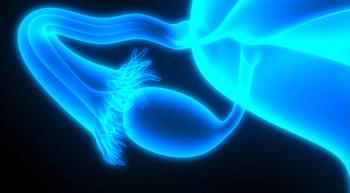
Medical Marijuana May Reduce Common Chemotherapy AEs; More Research Needed
Data presented at the Oncology Nursing Society’s 46th Annual Congress demonstrates that there is low level evidence that suggests medical marijuana or cannabinoids may reduce chemotherapy-related adverse events in patients with cancer.
There is some low-level evidence to suggest that the use of medical marijuana or cannabinoids may reduce the common adverse events associated with chemotherapy treatment in patients with cancer, according to data presented in a poster at the Oncology Nursing Society’s 46th Annual Congress.
The results, according to study author Erica Walter, RN, OCN, show that alternative therapeutic options — such as medical marijuana or cannabinoids — may be useful in patients who fail to respond to conventional treatments that help in reducing chemotherapy-related adverse events.
“Our poster is a result of a lot of interesting questions from cancer patients and families asking our nurses and providers about using medical marijuana for treating the adverse events of their chemotherapy,” Walter, of the Lipson Cancer Institute at Rochester Regional Health System in New York, said during the presentation.
The most common adverse event, according to Walter, that patients with cancer experience while receiving chemotherapy include nausea and vomiting, decreased appetite, anxiety, and sleep disorders.
Using a PICO approach, the researchers aimed to answer if the use of medical marijuana or cannabinoids are an effective treatment option for reducing these common adverse events. They conducted a literature review of the Medline and CINAHL databases and identified six articles that included data from adults with cancer undergoing chemotherapy from 2012 to 2018.
A consensus from the six article reviews demonstrated that cannabinoids were superior to placebo in reducing chemotherapy-related adverse events and in general, similar to standard anti-emetics alone or in combination. There was low level evidence suggesting that cannabinoids were associated with the improvement of nausea and vomiting attributed to the chemotherapy. Moreover, anxiety and sleep problems improved, but were not considered statistically significant. The reviews also demonstrated that appetite in patients receiving chemotherapy slightly increased.
“Experts agree on medical marijuana's therapeutic potential but call for more expanded research into its beneficial properties and stricter production standards,” Walter said. “Medical marijuana and cannabinoids may help alleviate some of the common adverse events of chemotherapy, but it's unclear whether they're superior to traditional anti-emetics.”
There’s an increased risk of short-term adverse events such as psychoactive effects, decreased concentration and loss of balance that need to be considered for patient safety, according to Walter. Additionally, she said, providers should consider possible interactions with a patient’s current medications.
“The choice for using cannabinoids should be tailored to each patient taking into account issues such as cost, regulatory policy and personal preference,” she said.
Walter concluded noting that further studies are needed to assess the potential use of medical marijuana and cannabinoids as well as to classify the effectiveness and the safety for each.
“Our unit will need to pursue educational opportunities on this subject as more of our patients are seeking out medical marijuana as a treatment option for their adverse events,” she said. “Understanding the potential use and risks will be important to ensure the best outcomes for our patients.”
Reference:
Bellian L, Casselbury M, Davis L, et al. Medical Marijuana Use in Oncology Patients. Presented at: the Oncology Nursing Society 46th Annual Congress. April 20, 22, 27, 29, 2021.
Newsletter
Knowledge is power. Don’t miss the most recent breakthroughs in cancer care.

















































































